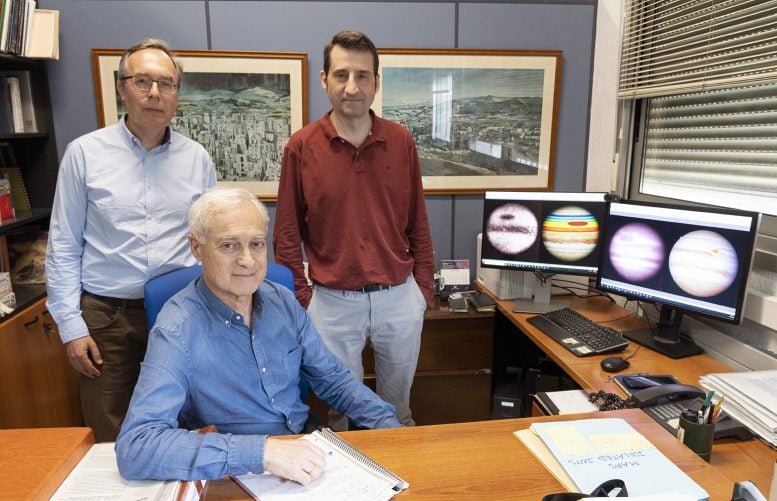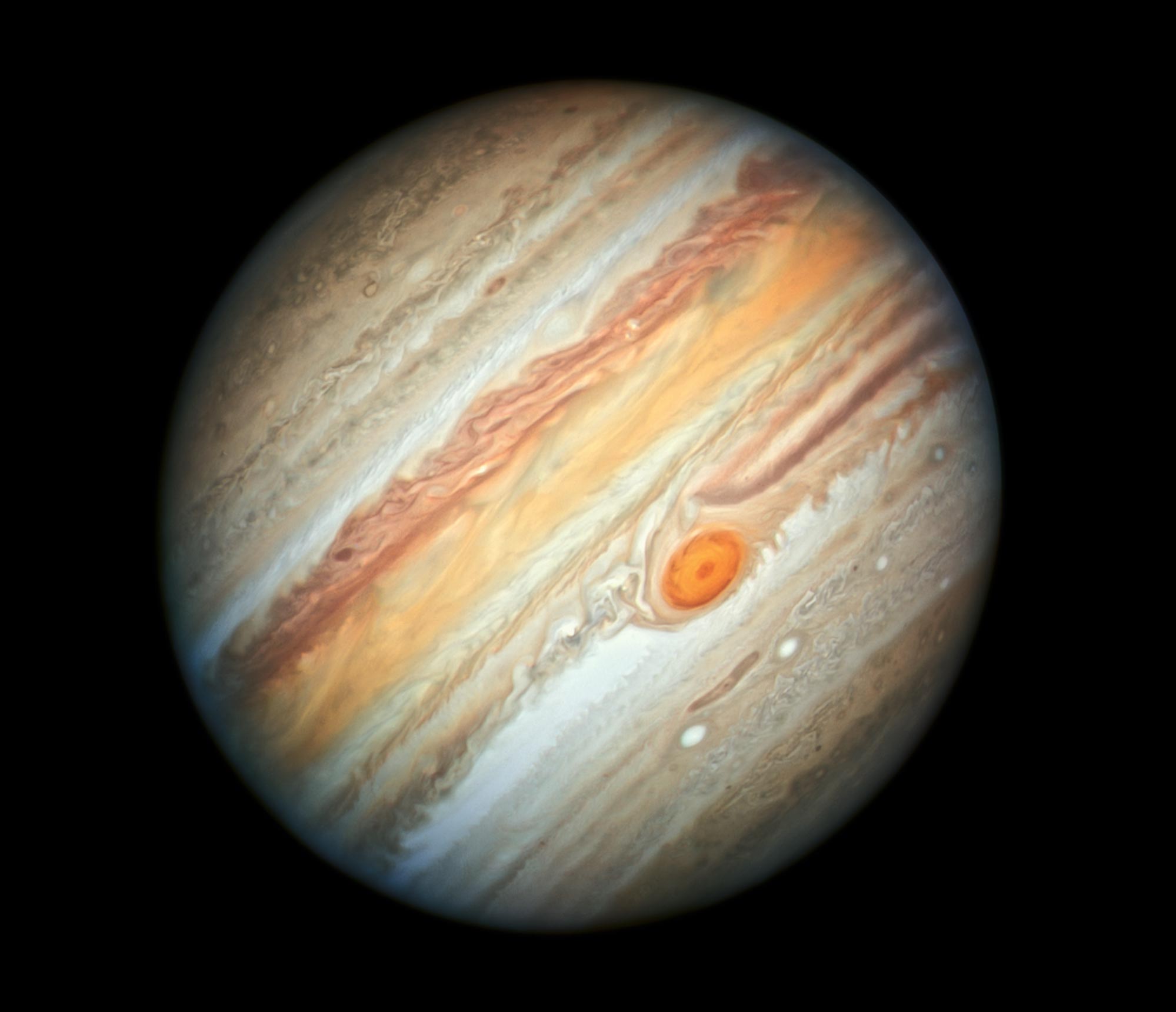“From the measurements of sizes and movements, we deduced that it is highly unlikely that the current GRS was the PS observed by G. D. Cassini. The PS probably disappeared sometime between the mid-18th and 19th centuries, in which case we can say that the longevity of the Red Spot now exceeds 190 years at least,” explained Agustín Sánchez-Lavega, professor of physics at the UPV/EHU and who led this research. The Red Spot, which in 1879 was 39,000 km in size at its longest axis, has been shrinking to about the current 14,000 km and simultaneously becoming more rounded. What is more, since the 1970s several space missions have studied this meteorological phenomenon closely. Recently, “various instruments on board the Juno mission in orbit around Jupiter have shown that the GRS is shallow and thin when compared to its horizontal dimension, as vertically it is about 500 km long,” explained Sánchez-Lavega. To find out how this immense vortex could have formed, the UPV/EHU and UPC teams carried out numerical simulations on Spanish supercomputers, such as the BSC’s MareNostrum IV, part of the Spanish Supercomputing Network (RES), using two types of complementary models of the behavior of thin vortices in Jupiter’s atmosphere. Predominating on the giant planet are intense wind currents that flow along the parallels alternating in their direction with the latitude. To the north of the GRS, winds blow in a westerly direction at speeds of 180 km/h while to the south, they blow in the opposite direction, in an easterly direction, at speeds of 150 km/h. This generates a huge north-south shear in wind speed, which is a basic ingredient enabling the vortex to grow inside it. In the research, a range of mechanisms were explored to explain the genesis of the GRS, including the eruption of a gigantic superstorm, similar to those rarely observed on the twin planet DOI: 10.1029/2024GL108993
Recent Findings and Simulation Studies
This website uses cookies so that we can provide you with the best user experience possible. Cookie information is stored in your browser and performs functions such as recognising you when you return to our website and helping our team to understand which sections of the website you find most interesting and useful.




















Discussion about this post